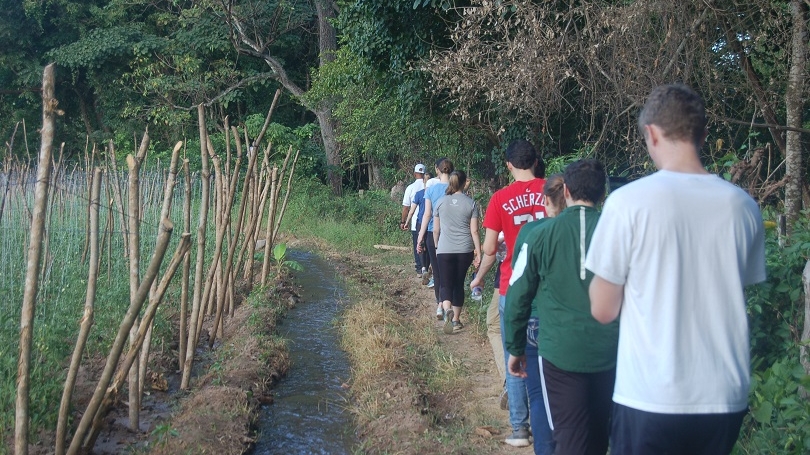
- Public Policy
- Leadership
- Funding
- News & Events
- About the Center
Back to Top Nav
Back to Top Nav
Back to Top Nav
Back to Top Nav
PBPL 85 began the weekend with an early morning trip to the airport, on our way to sunny Valledupar. From there, the class traveled to Pondores, which is one of the largest ECTRs, or reintegration camps, in Colombia. A United Nations escort truck led the bus into the FARC camp and the two UN workers in the Caribbean district introduced the class to the eco-tourism team — PBPL 85’s host for the next two days. The 26 ECTRs serve as "Territorial Spaces for Training and Reincorporation;” their reincorporation activities and productive projects include farming, sewing courses, eco-tourism and bare healthcare services. The ex-combatants have all stayed in Pondores following the leadership of the FARC secretariat. Joaquin Gomez is even planning to run for local office in La Guajira, the mountainous district in northern Colombia which borders Venezuela. The class was there to see the realities of the FARC during the 53-year long conflict and their daily lives. We were greeted with big smiles and open arms.
We had a lively discussion with the Secretariat and former combatants all afternoon, talking about how they see the country as in a moment of hope following the peace accords. Speaking with members of the FARC with varying experience in the group, ranging from 12 to 45 years, the class asked about their personal involvement in the conflict and understanding of the past. They brought up reasons including drastic inequality, fleeing paramilitary violence and ideology.
The class also spoke extensively with Maduro, a Venezuelan migrant that is working with the ECTR’s environmental tourism project. He brought up his personal experience working with the FARC and witnessing vast disparities of wealth in Colombia, as well as his thoughts on how the migrant crisis could affect the implementation of the peace agreement. Later in the afternoon, the class joined the FARC workers for "Cultural Hour," which was mandated in their original constitution. We discussed the challenges and complexities of Colombia's violent history and the ways that the members of the FARC dealt with the conflict. One of the former combatants who had participated in the secret peace talks in Havana prior to 2016, Mariangel, was more than happy to answer our eager questions. At the end of the hour, the class listened to one of the ex-guerillas play his guitar and sing FARC message songs.
Getting ready for bed, Professor Wheelan and four other students chose to sleep in hammocks while the rest of the class slept in replicas of the FARC’s bed in the encampment. However, the Professor Wheelan quickly learned the danger of sleeping in a hammock that isn’t tied properly. After a loud crash and some painful readjustment, the camp settled down — albeit with some chuckling at the image that we were left with.
The next morning the class woke up at 6 AM for breakfast, then was then led on an extensive tour of the ECTR and farmland. We saw the banana fields, yucca plants, wheat, cows and goats. The mountains looming in the distance were a beautiful background. Afterwards, the UN volunteers led the class to the center of the ECTR, where the former combatants live in concrete barricades, and spoke with Gomez, who was the leader of the Northern Bloc. The UN was also present and helped translate. Following our very animated discussion, the class toured the rest of the ECTR. We went to the woodworking shop and learned that President Duque ordered a bookshelf made by the Pondores ECTR. It was also fascinating to see that the library contained shelves of books on violence in Latin America, displacement, victims, philosophy and migration. The class also toured the Memory House, and were greeted with recreations of the FARC uniform and stimulating paintings that depicted their history in Colombia.
Up next - the class’s visit to the second ECTR near Valledupar, called San Jose.
Written by Alexa Green '19, 18F PBPL 85: Global Policy Leadership course participant
This is part of a series where PBPL 85:Global Policy Leadership students reflect on their experiences during the two-week field research portion of course. While in country, students meet with local policy leaders: politicians, academics, civil society leaders, journalists, business leaders, diplomats, and other in-country experts who help inform their analyses.